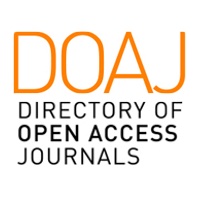EL CEMENTERIO DE LOROHUASI (CATAMARCA, ARGENTINA): RITUAL Y SIMBOLO EN UN CONTEXTO MORTUORIO (1) (2)
Resumen
Se informa el descubrimiento y los resultados iniciales de la excavación del cementer io prehistórico tardío de Loro Huasi (Catamarca). La evidencia recuperada hasta el momento permite reconocer por un lado la relación espacial (centrípeta - centr ífuga) de los enterratorios con respecto a la importante figura polar representada por un notable mortero sobre bloque; y por otro, sospechar una posible segregación posicional de las inhumac iones de inmaduros individuales respecto de los adultos y colectivos . Se discuten alternativas respecto del significado ritual y simbólico de los hallazgos y su distribución espacial dentro del contexto funerario.
Texto completo:
PDFReferencias
BENDANN, E (1930) Death Customs: An Analytical Study of Burial Rites. Knopf, NY.
BINFORD, LR (1971) Mortuary practices: their study and their potential. Society for American Archaeology Memoirs, 25:6-29.
BROWN, JA (1971) The dimensions of status in the burials at Spiro. En: Brown, J. (ed) Approaches to the social dimensions of mortuary practices. Society for American Archaeology. Memoir, 25:92-112.
BUIKSTRA, JE (1972) Hopewell in the Lower Illinois river valley: a regional approach to the study of biological variability and mortuary activity. Tesis Doctoral. Departamento de Antropología. University of Chicago.
CLAKSON, PB (1995ms) Técnicas en la determinación de edades cronológicas de geoglifos. Simposio Internacional de Arte Rupestre, Arica, Chile, 13-16.
DORN, RI (1994) Dating petroglyphs with a three-tier rock varnish approach. En: Whitley DS and LL Loendorf. (eds) New Light on Old Art. Institute of Archaeology. University of California. Los Angeles. Monograph 36:13-35.
DURKHEIM, E (1915) The Elementary Forms of the Religious Life. Allen and Unwin.
London.
GONZALEZ, LR y RENARD, SF (1990ms) Relevamiento y registro del sitio arqueológico El Aperito, Dpto. Santa María, Catamarca. Informe PID-CONICET 1200. Buenos Aires, 1993.
HERTZ, R (1960) A Contribution to the Study of the Collective Representation of Death. In Death and the Right Hand (pp:9-86). Original: Contribution a une etude sur la representation collective de la mort, París, 1907. R.y C. Needham, trans. Free Press: Glencoe, IL.
HODDER, Y (1982a) Social Structure and Cemeteries: a Critical Appraisal. En: Rahtz, P. , Dickinson, T. y L. Watts (ed) Anglo-Saxon Cemeteries, pp:161-169. BAR British Series 82.
HODDER, Y (1982b) Symbols in Action. Ethnoarchaeological Studies of Material Culture.
Cambridge University Press.
HOYOS, M. de, y LAZZARI, M (1991ms.) Relevamiento del cementerio arqueológico de Lorohuasi, Dpto. Santa María, Catamarca. Informe PID-CONICET 1200. Buenos Aires, 1993.
LARSEN, CS (1987) Bioarchaeological Interpretations of Subsistence Economy and Behavior from Human Skeletal Remains. En: Schiffer, M. (ed): Advances in Archaeological Method and Theory, 10:339-445.
LORANDI AM (1966) El arte rupestre del Noroeste argentino. Dédalo II(4):15-172. Museu de Arte e Arqueología, Universidade de S.Pablo. San Pablo.
O’SHEA, JM (1984) Mortuary Variability. An archaeological investigation. Academic Press, Orlando.
PEEBLES, CS (1974) Moundville: the organization of a prehistoric community and culture.
Tesis Doctoral. University of California. Santa Barbara.
SAXE, AA (1970) Social dimensions of mortuary practices. Tesis Doctoral. University of Michigan.
STAFFORD, BD y SANT, MB (1985) Smiling Dan. Structure and Function at a Middle Woodland Settlement in the Illinois Valley. Kampsville Archaeological Center Research Series, Volume 2.
TARRAGO, MN (1994) Jerarquía social y prácticas mortuorias. Actas y Memorias XI Congreso Nacional de Arqueología Argentina (Resúmenes Expandidos), 1a. Parte. San Rafael, Revista del Museo de Historia Natural t. XIII(1/4):170-174.
TARRAGO, MN (1995) Desarrollo regional en Yocavil. Una estrategia de investigación. Actas XIII Congreso de Arqueología Chilena, Universidad de Antofagasta. Antofagasta, Chile (en prensa).
TARRAGO, MN, RENARD, SF y CALDERARI, MR (1993ms.) Registro de sitios arqueológicos, Departamento de Santa María, Catamarca. A publicarse en Cuadernos de Trabajo, Museo Etnográfico, FFyL, Buenos Aires.
VAN GENNEP, A (1960) The Rites of Passage. Original: Les rites de passage, París, 1932. M. B. Vizedom y GL Caffee, trans. University of Chicago Press.
WALKER, A (1981) Dietary Hypotheses and Human Evolution. Philosophical transactions Royal Society of London Series B, 292: 57-64.
WIANT, MD y McGIMSEY, CR (1986) Woodland Period Occupations of the Napoleon Hollow Site in the Lower Illinois Valley. Kampsville Archaeological Center Research Series, Volume 6.
Enlaces refback
- No hay ningún enlace refback.
Copyright (c) 2020 Cuadernos de la Facultad de Humanidades y Ciencias Sociales. Universidad Nacional de Jujuy

Este obra está bajo una licencia de Creative Commons Reconocimiento-NoComercial-CompartirIgual 4.0 Internacional.
Cuadernos FHyCS-UNJu por Facultad de Humanidades y Ciencias Sociales - Universidad Nacional de Jujuy se distribuye bajo una Licencia Creative Commons Atribución-NoComercial-CompartirIgual 4.0 Internacional.
Basada en una obra en http://revista.fhycs.unju.edu.ar/revistacuadernos.
Hecho con OJS - Open Journal System











